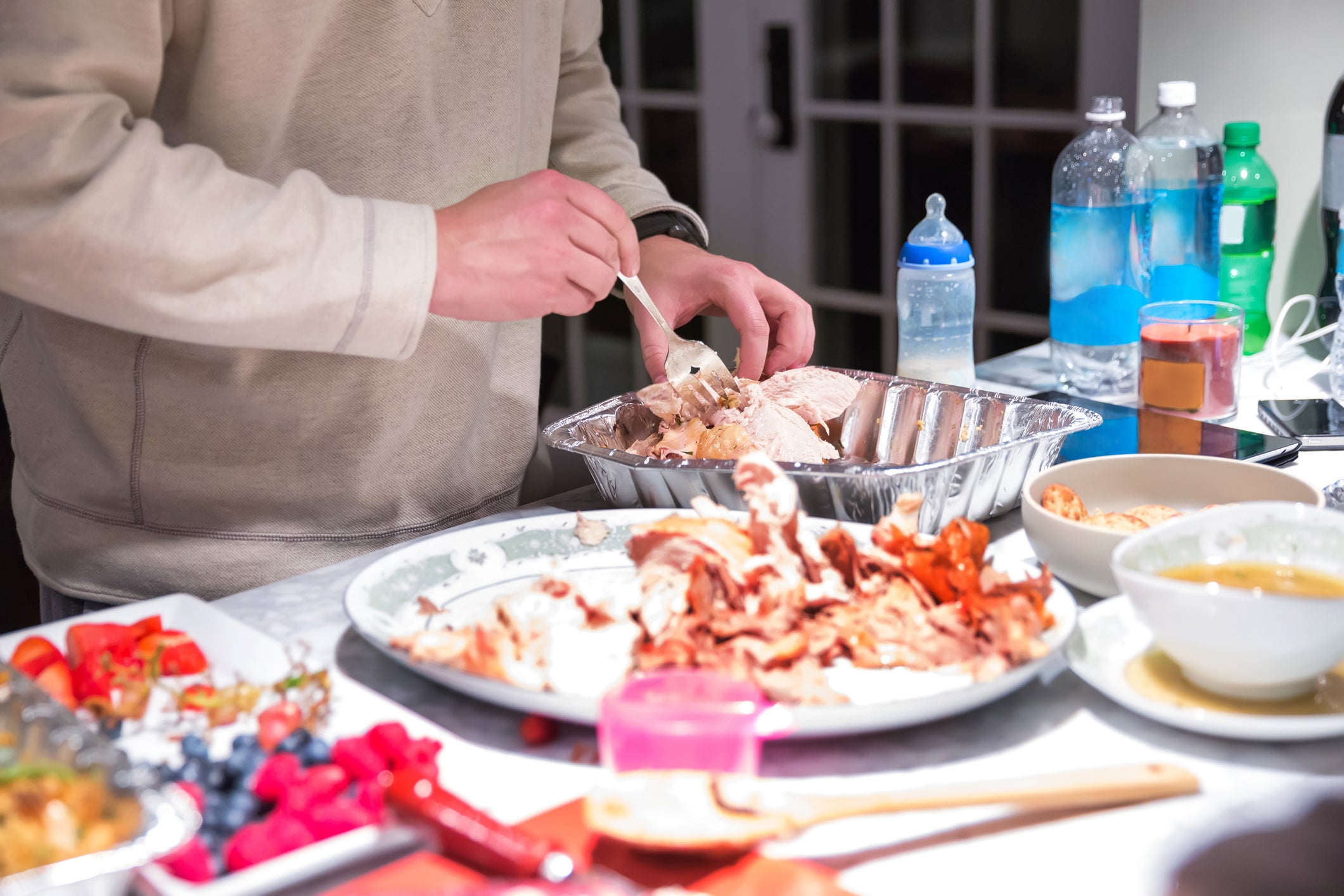It takes Americans 15 hours of planning and cooking to make the perfect Thanksgiving spread: the turkey, the stuffing, the sides and the cranberry sauce.
After eating, most families wind up in a “food coma” on the couch, watching a repeat of the National Dog Show or the Macy’s Thanksgiving Day Parade — and not everyone puts their spread back in the fridge immediately.
But food safety experts warn that not taking the time to properly wrap up, and store food, could leave you at risk for food poisoning when you go back for leftovers the next day.
Dangerous bacteria can grow on food left out at room temperature within just two hours of coming out of the oven. This includes the bird, appetizers and side dishes, which may contain milk and dairy products.
“Many holiday-related food safety issues stem from outdated traditions or rushed environments,” Cedars-Sinai clinical dietitian Albert Abayev explained. “Long stretches of food left out on counters, undercooked poultry or stuffing, crowding the refrigerator, thawing meats on the counter and multitasking that can lead to cross-contamination are among the most frequent problems.”

After that two-hour period, perishable food enters what’s known as the “Danger Zone,” sitting in temperatures between 40 and 140 degrees Fahrenheit. In the Danger Zone, bacteria can multiply quickly and cause the food to become unsafe, foodsafety.gov warns.
Turkey that’s left at room temperature may be susceptible to the bacteria, Clostridium perfringens, which is the second most common bacterial cause of food poisoning in the U.S. and affects nearly one million people each year.
Between six hours and a day after eating the bad turkey, people can experience vomiting, abdominal cramps and diarrhea.
And other dishes, such as stuffing and gravy, can also be affected by the same bacteria, as well as salmonella, listeria and E. coli. In some cases, complications of these infections can be fatal, and around 3,000 people die from food-borne illness each year, according to the Centers for Disease Control and Prevention.
“These germs don’t care how long you spend on that gravy-from-scratch or homemade cranberry sauce. They’ll show up uninvited and send your guests home with more than just leftovers,” Northern California’s Sacramento County warned.
How you store your leftovers is nearly as important as when you store them, too.
The leftovers should be kept in airtight, shallow containers that allow the food to cool down quickly. If the food you’re putting in the fridge is piping hot, it may heat up other things in your fridge unintentionally.
Turkey can be sliced into smaller pieces and other hot dishes may be divided into smaller portions to help them cool faster.
What about the dessert? While pumpkin and other pies may be refrigerated for up to five days, most leftovers should be stored or frozen by the Monday after Thanksgiving.
After that, turkey, gravy and stuffing and any other Thanksgiving dish can be frozen for between four and six months. Though frozen food stays safe indefinitely, the quality may decrease over time.

“Be realistic about how much fridge space you truly have and what you can feasibly eat,” University of Nebraska educator Hannah Guenther advised. “Put everything else in the freezer and then you can enjoy it later on.”
If you want to relive your holiday experience, make sure to reheat any leftovers to an internal temperature of 165 degrees Fahrenheit, which is the standard to ensure any bacteria have been eradicated.
Gravy should be brought to a full boil and foods reheated in the microwave should be stirred partway through, according to University of Maine food safety scientist Dr. Gulsun Akdemir Evrendilek.
“It’s not something we normally think about, but food safety is really about protecting your entire community,” Rolando Villareal, the Environmental Health Division Chief for the Sacramento County Environmental Management Department, said.





